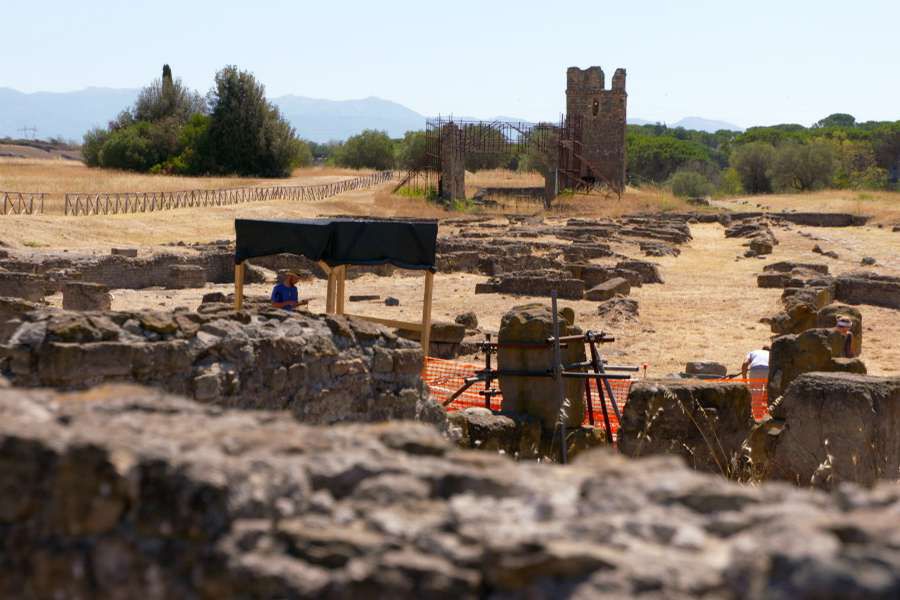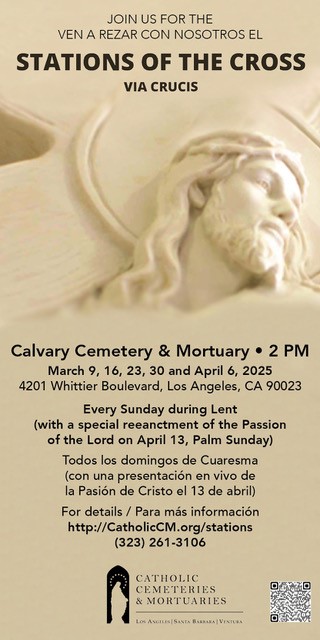Just eleven miles east of Rome lies the site of excavations of another ancient city, one which thrived in the last few centuries before Christ, but, overshadowed by Rome, eventually died out — though not before having its own thriving Christian community.
The city, Gabii, was first occupied by small groups of settlers in the early Iron Age (9th-8th century B.C.). It eventually grew into a full-fledged city with walls and large public buildings, peaking around the 3rd and 2nd centuries B.C.
Evidence shows that it then began to shrink, probably because of competition from Rome, but archeologists working on the site have recently uncovered the remains of a tower of a church, and believe the city to have been a center for Christianity, if an unusual one, in the early centuries of the Church.
“We know that there was a thriving Christian community and that it had a bishop as early as the 5th century, which is kind of unusual for a community of this size,” said Nicola Terrenato, a professor for the University of Michigan and coordinator of the excavations.
“So it probably means that even if it was a small community it was considered very important because of the glory that Gabii had in the past,” he told CNA.
The Diocese of Gabii was suppressed in 1060, but it was made a titular see in the late 20th century. The Titular Bishop of Gabii is currently Sebastian Taltavull Anglada, who is auxiliary bishop of Barcelona.
Because Rome has been continuously inhabited, the city exists in layers upon layers of construction and reconstruction over the years. These many layers can make it hard to investigate and map the early growth of the city. Gabii, by contrast, died out sometime in the 9th or 10th century AD.
Because the two cities emerged around the same time, researching Gabii and what it looked like when first formed can shed light on the beginnings of the city of Rome as well.
“We chose Gabii for excavation for a variety of reasons. This is a site that had not been excavated previously, so you had a whole city that you can investigate. But even more importantly, this is a site that really illustrates well the birth and the decline of the ancient city,” Terrenato said.
One of the goals of the excavations, however, is to find out if Gabii had a bishop’s residence and a cathedral in the early part of the Middle Ages. Whether there was ever a cathedral is still an unsolved question, but the excavations did uncover a church dedicated to St. Primitivus, an early Christian martyr in Rome.
The bell tower of the church, converted into a watchtower later in the Middle Ages, is still visible at the site. Excavations have also revealed a large stone-block construction, which is an early example of the Roman monumental architecture.
“This is a stone that Gabii was famous for in antiquity,” Terrenato said. “A high quality volcanic tufa was quarried inside the city and initially outside the city and beautiful buildings could be built out of beautiful blocks.”
“It was even used in the Forum of Augustus in Rome and the city probably thrived on a trade of this kind of stone.”
Another conspicuous ruin remaining is that of an ancient temple, attributed to Juno. In the late 1700s an archaeologist uncovered a large cache of statues at Gabii, many of which are now in the Louvre after they were carried off from Rome by Napoleon.
Besides the nearly 40 statues and busts from Gabii at the Louvre, there is also an ancient altar called “Altar of the Twelve Gods” dating to the 1st century AD.
New excavations were launched in 2007 by the multi-institutional Gabii Project, led by Nicola Terrenato and the University of Michigan, which collaborates with Yale University, the University of Glasgow, Charlton University, and the University of Dallas.
Professors from these institutions bring both undergraduate and graduate students to the site to learn and work, Terrenato explained. On average there are around 70 people on-site each day.
One of these is Andrew Johnston, an assistant professor of classics and history at Yale, who first began working at the site while a graduate student and who now leads trench excavations.
“So in addition to the research questions that drive us here at the Gabii project, one of our priorities is to train the next generation of North American archaeologists,” he said.
“One of our goals is to train students in a wide range of methodologies and tools of modern archaeology,” he continued.
Not just working at the site, “but also in various labs supervised by specialists in ceramics, osteology, zooarchaeology, environmental archaeology, to teach students about all of the kinds of evidence and data that we are hoping to collect as we excavate — not just exposing the architecture like this, but looking for other kinds of evidence that can tell us about wide range of activities that were taking place at the city in antiquity.”

